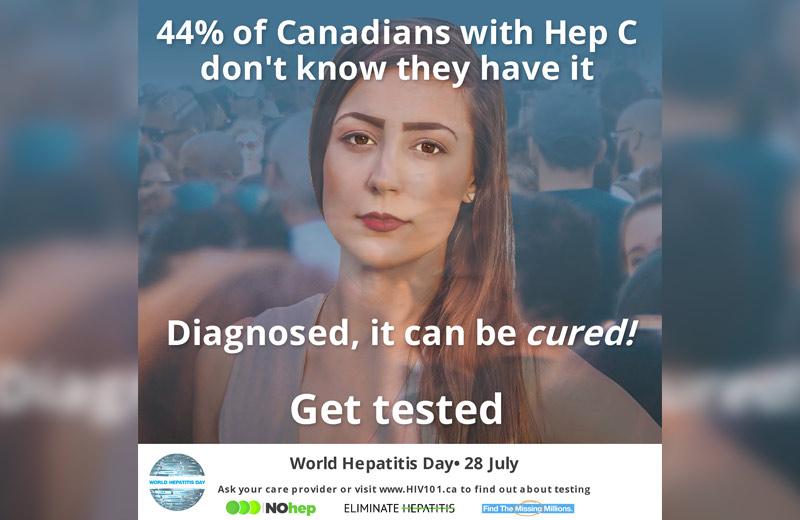Worldwide, about 290 million people are living with viral hepatitis but don’t know it. Viral hepatitis kills more people each year than any other infectious disease, including HIV, malaria, and tuberculosis. Being undiagnosed, unlinked to care, and untreated, millions of those people will suffer and many will lose their lives far too early.
In recognition of the harm that come from undiagnosed hepatitis, the World Health Organization (WHO) has made a target to completely eliminate viral hepatitis by 2030.
Are we going to achieve that target?
Hepatitis C in Canada
Hepatitis C (HCV) is one of the three main types of viral hepatitis infections. Hepatitis A and B are the two. While all types primarily affect the liver, they are different illnesses and are treated differently. All are diagnosed with a simple blood test.
HCV is spread through blood. It may be transmitted through sexual contact, sharing drug supplies, using unsterilized tattoo and body piercing supplies, and even through sharing of common household items (like toothbrushes, nail clippers, and razors).
Most people who have HCV don’t have any symptoms and don’t know they have the disease. Untreated, it can lead to scarring of the liver (cirrhosis), liver cancer, and liver failure. There is no vaccine for HCV, but the virus is curable in the vast majority of people. New treatments are available that are well tolerated, safe, and are taken in pill form for anywhere from 8-16 weeks.
Here in Canada, it’s estimated that about 44% of those with HCV are unaware they have it. People who inject drugs, men who have sex with men, people with experience in the prison system, and people born between 1945 and 1975, are more likely to test positive for HCV.
Unfortunately, HCV and some of the risk factors for the virus are stigmatized, and this can be a major barrier to getting testing and treated.
It’s important to note that infection is preventable with use of condoms, access to harm reduction supplies, good opiate treatment programs, and education. One of the most important preventative tools is actually treatment: the more people who are treated, the fewer people they will transmit it to.
Getting people tested and linked to care is key to elimination!
Elimination of Hepatitis C
Availability of the new hepatitis C treatments means that achieving the World Health Organization’s elimination target should be simple, right? Unfortunately, recent estimates suggest that to reach these targets we’ll need to scale-up of testing, create linkage to care, and increase efforts to reduce transmissions.
What can you do?
First, speak with your primary care provider or the Northern Health HIV/HCV Specialized Support Team to see if you should get tested. Second, have conversations with family and friends to encourage them to do the same. By spreading the word that viral hepatitis is preventable – and in many cases treatable or even curable – you can help eliminate hepatitis by 2030!
Find more information about HCV.














Comments